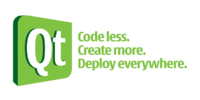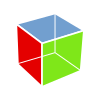Graphical Development
For drawing interfaces in linux there are a few options. To speak at the lower levels, you can use DirectFB or [www.x.org/docs/X11/xlib.pdf X11]. If you want to draw a simple user interface at a much higher level you should use a graphical toolkit as listed below.
Linux has 3 major toolkits used for developing interfaces. These include QT, GTK, and WxWidgets. For development you may want to build the interface on your desktop PC, and then connect with any specific hardware functionality when it runs on the board. You should also be aware of the versions of GTK, QT, and WX widgets available in the current provided distribution as their APIs can all change significantly between versions. Whenever possible, you may want to try to use the DirectFB implementation of these toolkits. While it will not work if you need a window manager, it will often provide the most efficient user interface. Refer to the documentation of the specific toolkit for more details.
Development environment available for Windows, Linux, and Mac. The most common utility used is QT Creator which includes the IDE, UI designer, GDB, VCS, a help system, as well as integration with their own build system. See QT's documentation for a complete list of features. QT can connect with our cross compilers. If you are working with Linux you can use the same cross compiler and connect it with qtcreator. QT also offers professional training from their website. QT has a large range of supported language bindings, but is natively written with C++.
GTK Development is possible on Windows, Linux, and Mac, but will be significantly easier if done from Linux. Typically you would use the Anjuta IDE which includes IDE, UI designer (GtkBuilder/glade), GDB, VCS, devhelp, and integration with the autotools as a built system. This is only available for Linux. GTK also has a large range of supported bindings, though is natively written in C.
Hello world tutorial. This uses the simplest example as it does not use any interface design and creates all widgets from code.
Micah Carrick's GTK/glade tutorial. This will show you how to use the Glade designer (integrated with Anjuta as well) to create an xml description for your interface, and how to load this in your code.
wxWidgets is a cross platform graphics library that uses the native toolkit of whichever platform it is on. It will draw winforms on Windows, and GTK on Linux. While wxWidgets has many tools available for development, Code::Blocks seems the most recommended as it includes wxSmith for designing the user interface, as well as including an IDE and GDB support. The wxWidgets toolkit has some binding support, and is natively written in C++.


